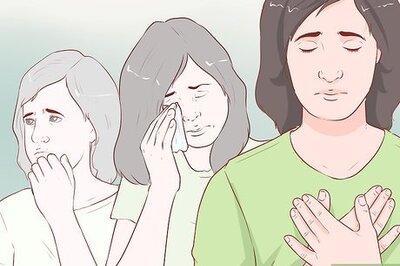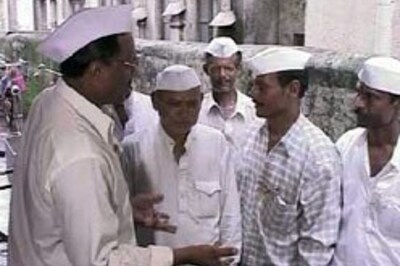
views
It is a modern tale faced by almost all countries: people leaving their ancestral towns, hamlets and villages to more urban areas due to a number of reasons. Sometimes cultures are lost. This was the exact problem being faced by a Spanish hamlet which has just 16 residents left. Until they thought of a solution – a nude calendar.
Pea Zafra de Abajo has been dealing with a steady exodus for decades as residents seek jobs and opportunities outside of the southern Spanish hamlet. But it found a unique strategy to fight back, essentially stripping down to save their town.
“When I proposed a nude calendar, people said, ‘Are you crazy?'” Luca Nicolás, president of the hamlet’s residents’ association told the Guardian. “However, I saw it as a way to put ourselves on the map and show off our 16-person hamlet.”
The divisive idea gradually gained traction. By September, there were enough residents willing to participate that a three-day photo shoot was set in motion. The result is a calendar for 2023 that artfully depicts residents alongside the landscapes and traditions that have long defined the hamlet in the Murcia region.
What are the Photographs Like?
In October Nicolás poses in the 200-year-old home that once belonged to her grandfather and now houses the hamlet’s only winery, while November features Juanjo, a local farmer who poses with a variety of strategically placed squash, the report states.
The calendar’s undisputed star is Pedro Sánchez. The hamlet’s oldest resident, 100 years old, graces the month of December, shirtless and smiling as he holds up a bota, or wineskin. “He was the first to say yes,” Nicolás told the Guardian.

Has the Calendar Worked?
Orders for the €9 calendar have poured in from all over Spain and as far away as Mexico since its October debut. Nicolás said the hamlet has sold nearly 400.
Spain’s Rural Depopulation Problem
As word of the calendar spreads, messages from across Spain, where rural depopulation threatens more than half of the country’s surface area, have poured in. “There were weeks when I didn’t know whether to cry from happiness or sadness,” she told the Guardian, referring to the many people who shared their own struggles to save their hamlets. “We discovered that we were not alone in this situation.”
The success of the calendar has been made all the more poignant for the few remaining residents in Pea Zafra de Abajo by the quarries that surround the hamlet, often leaving remaining residents battling against the constant noise of mining activities and clouds of dust, according to Nicolás.
What is Rural Flight?
Rural flight (or rural exodus) is the movement of people from rural to urban areas.
It can occur following the industrialization of primary industries such as agriculture, mining, fishing, and forestry—when fewer people are needed to bring the same amount of output to market—and related secondary industries (refining and processing) in industrialising economies such as Britain in the eighteenth century or East Asia in the twentieth century. Rural exodus can also occur as a result of an ecological or human-caused disaster, such as famine or resource depletion. This is an example of a push factor.
The same phenomenon can occur simply because of higher wages and educational opportunities available in urban areas; these are examples of pull factors.
Why is it a Problem?
When rural migrants move to cities, they face a number of challenges that may impair their quality of life. Many migrants lack the education and skills required to obtain decent jobs in cities, forcing them to work in insecure, low-paying jobs. The constant influx of new rural migrants exacerbates underemployment and unemployment, which are common among rural migrants.
Employers offer lower wages and poorer working conditions to rural migrants, who must compete for limited jobs and are frequently unaware of their labour rights. Rural migrants frequently face deplorable living conditions. Many cities’ populations have exploded; services and infrastructure in these cities are unable to keep up with population growth. Massive rural population influxes can cause severe housing shortages, insufficient water and energy supply, and slum-like conditions throughout cities.
Furthermore, rural migrants frequently struggle to adjust to city life. In some cases, there are cultural differences between a region’s rural and urban areas. It becomes difficult for them to maintain their cultural traditions when they become dispersed in urban areas. City dwellers may also look down on these newcomers, who are often unaware of city social norms. Migrants face numerous social challenges when they move to cities, as they are both marginalised and separated from their home cultures.
Is it India’s Problem Too?
According to a report in Asia and the Pacific Policy Society titled ‘India’s rural-urban conundrum’ more and more Indians are migrating to cities in search of better incomes, education, and opportunities. The report, published in 2017, said India at the time had the world’s second largest urban population, after China.
According to the UN, India’s urban population will grow by 404 million people by 2050. Migrants are absorbed in industries that require unskilled or semi-skilled labour, such as construction and services. Many of these jobs, however, are disappearing and will continue to disappear as a result of mechanisation, widespread use of robots, and advances in artificial intelligence.
The typical government response to this growing urban challenge has been to direct funding toward city-centric development plans that aim to redesign and upgrade existing facilities. While much emphasis is placed on redevelopment of large cities, there are few successful initiatives aimed at making villages self-sufficient, the report explains.
In the face of rising urban challenges exacerbated by environmental hazards, the authors argue that India requires a new development path that will ensure sustainable livelihoods for rural people while reducing rural-urban migration and thus having a positive impact on cities.
Read all the Latest Explainers here




















Comments
0 comment